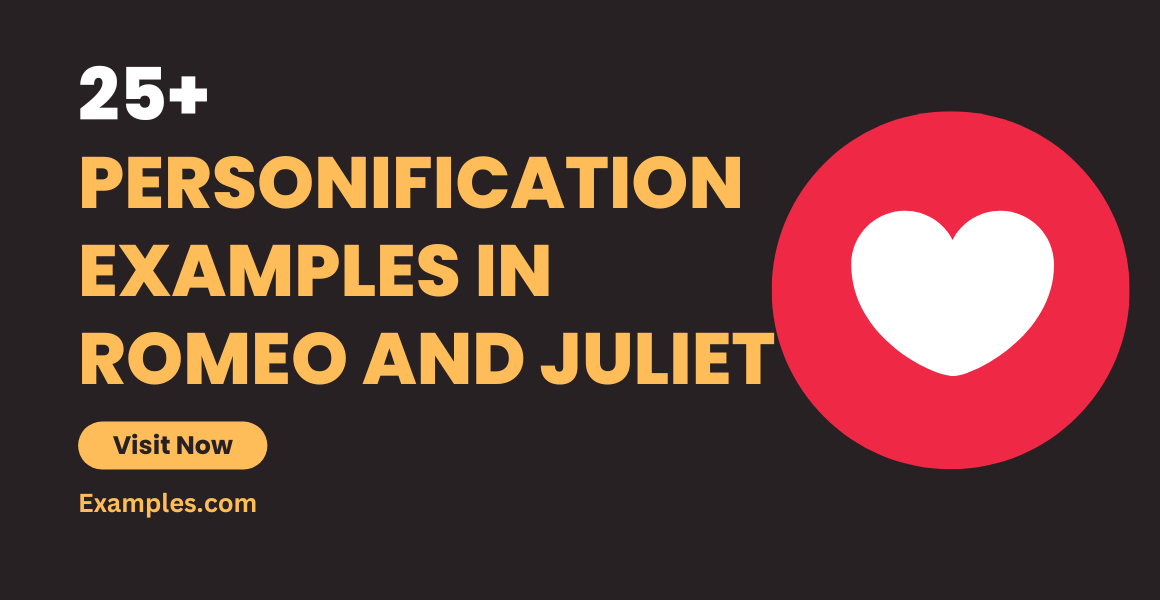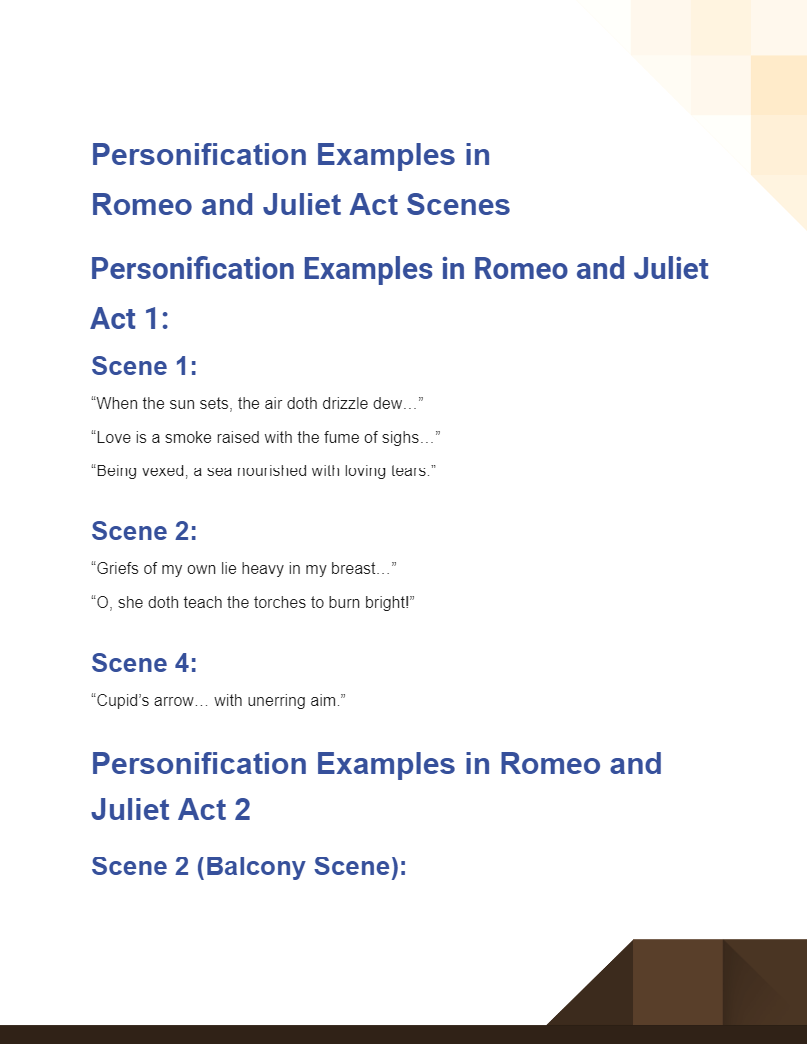

Shakespeare’s timeless classic, ‘Romeo and Juliet’, offers more than just a tragic tale of star-crossed lovers. Delving deeper, one finds the Bard’s ingenious use of personification, breathing life into inanimate objects, making them as expressive as the protagonists themselves. As we explore these evocative personification examples, let’s also uncover how to craft such vivid imagery in our own writing, learning from the master himself. Dive in for a poetic journey interspersed with invaluable writing tips!
Personification is a literary device where non-human objects or abstract concepts are given human qualities or characteristics. In “Romeo and Juliet,” Shakespeare frequently uses personification to add depth, emotion, and vividness to his descriptions, making the setting and situations even more evocative for the readers or audience.
In the Prologue of “Romeo and Juliet,” the Chorus says:
“From forth the fatal loins of these two foes A pair of star-cross’d lovers take their life.”
Here, the term “star-cross’d” is a form of personification. Stars, of course, do not have the human ability to cross or make decisions, but this expression gives them a human-like quality of controlling or influencing fate. The idea is that the stars (or fate) are against the love of Romeo and Juliet, suggesting that their tragic end was predetermined by the heavens.

In “Romeo and Juliet”, Shakespeare’s use of personification transforms abstract concepts into vivid imagery, giving life to inanimate objects and intangible emotions, enhancing the emotional depth and setting of the play.
“When the sun sets, the air doth drizzle dew…”
“Love is a smoke raised with the fume of sighs…”
“Being vexed, a sea nourished with loving tears.”
“Griefs of mine own lie heavy in my breast…”
“O, she doth teach the torches to burn bright!”
“Cupid’s arrow… with unerring aim.”
“Arise, fair sun, and kill the envious moon…”
“The brightness of her cheek would shame those stars…”
“Her eyes in heaven would through the airy region stream so bright.”
“The grey-eyed morn smiles on the frowning night…”
“Earth that’s nature’s mother is her tomb.”
“These violent delights have violent ends.”
“Gallop apace, you fiery-footed steeds…”
“Come, night; come, Romeo…”
“Lovers can see to do their amorous rites by their own beauties.”
“Night’s candles are burnt out…”
“Jocund day stands tiptoe on the misty mountain tops.”
“My dismal scene I needs must act alone.”
“The vaulty heaven so high above our heads.”
“Death lies on her like an untimely frost…”
“Flowers are the heads of buried bones.”
“I dreamt my lady came and found me dead…”
“Seals of love, but sealed in vain.”
“Thou detestable maw, thou womb of death…”
“The roses in thy lips and cheeks shall fade to wany ashes.”
“Death, that hath sucked the honey of thy breath.”
Understanding Personification: Personification is a literary device where non-human objects, ideas, or animals are given human attributes. In essence, it means attributing human characteristics to things that aren’t human.
Remember, like any other skill, mastering personification in poetry takes time, patience, and practice. Keep writing, keep refining, and most importantly, enjoy the poetic journey!